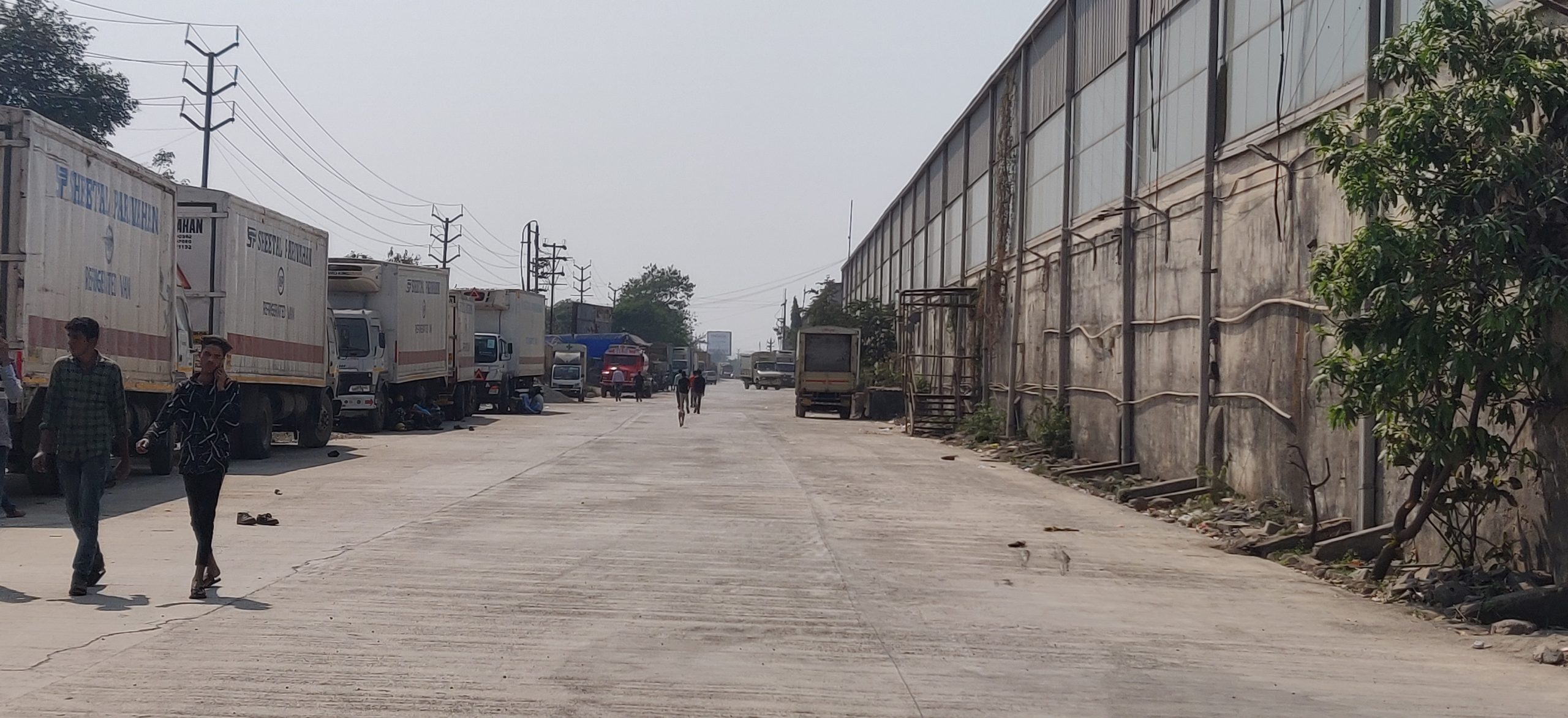Warehouses salvaged the world’s second-most populated country by helping deliver masks to medicines after the nation imposed a stringent lockdown that curbed movement of people and goods in India. A major chunk of the commercial real-estate industry, it went on to become the backbone of consumer-driven sectors at the height of the pandemic.
The COVID-19 pandemic helped strengthen the warehousing industry after consumers shifted to online shopping in order to adhere to the social distancing norms, according to the latest report of Businesswire, Berkshire Hathaway’s information distribution service, published earlier this month. The sector valued at $15 billion (nearly ₹1.1 lakh crore) in 2019 is expected to grow at nearly 10% for the next five years in India, the report also said.
Warehouses are built keeping the next twenty years in mind
Srikant Chavan, project co-ordinator of Scon Projects
“Warehouses are built keeping the next twenty years in mind,” said Srikant Chavan, project coordinator of Scon Projects, an industrial projects construction company.
Mumbai and Delhi-National Capital Region (NCR) have the lion’s share of the commercial real-estate market, according to a study titled India Warehousing Market Report 2020 by London-based international property consultant Knight Frank. Mumbai holds the majority of warehousing land with two major clusters in India.
One of them is Bhiwandi dubbed India’s “logistics epicenter” by Colliers, a global real-estate brokerage company.
The erstwhile textile city is one of Asia’s largest warehouse hubs. It houses warehouses of e-commerce players Amazon, Myntra and Flipkart, online retailers H&M and third-party logistics (3PL) DHL among others.
Nearly thirty-five kilometers off Mumbai, the landscape begins to change as the skyscrapers of the financial capital of India become smaller in the car’s rear view mirror. The bustling city is suddenly muted by Bhiwandi’s stretches of barren lands on both sides of the road. The familiar hoardings of buildings and residential complexes all over Mumbai are replaced by those of industrial parks and commercial property on lease. Broad pipelines run beside the road where trucks and commercial vehicles far outnumber passenger vehicles.
“Everything was shut but this continued,” said truck driver Ashok Yadav. He didn’t go back to his village in Uttar Pradesh during the pandemic. His income too remained the same, he said.
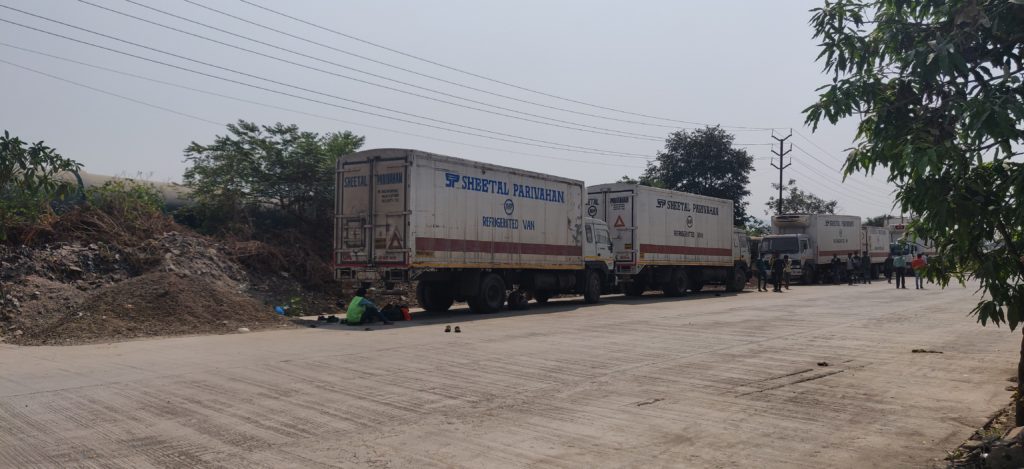
The earnings, however, were not keeping pace with the rising needs of the time.
“Income remained the same. Prices of diesel did not,” said Dheeraj Tiwari, another truck driver from Uttar Pradesh. Tiwari works for Sheetal Parivahan, a cold storage company that transports medicines.
Yadav and Tiwari are among hundreds of workers who shoulder the responsibility of delivering goods from warehouses to our doorsteps. The industry created jobs at a time when the pandemic resulted in a reverse migration of people in the unorganized sector. Vacancies of workers were at its lowest in Mumbai followed by NCR among eight cities tracked by Knight Frank.
The industry’s large-scale expansion was not without casualties. An Xpressbees warehouse that collapsed left three dead and probably others missing.
The pressure to meet deadlines and a serious dearth of safety measures lead to hazards in the warehouses, said 23-year old Farhan Khan. He works for Armes Maini, a Karnataka-based industrial storage system that was roped in to refurbish the warehouse after Flipkart-owned Ekart, a delivery services company decided to move to a different location.
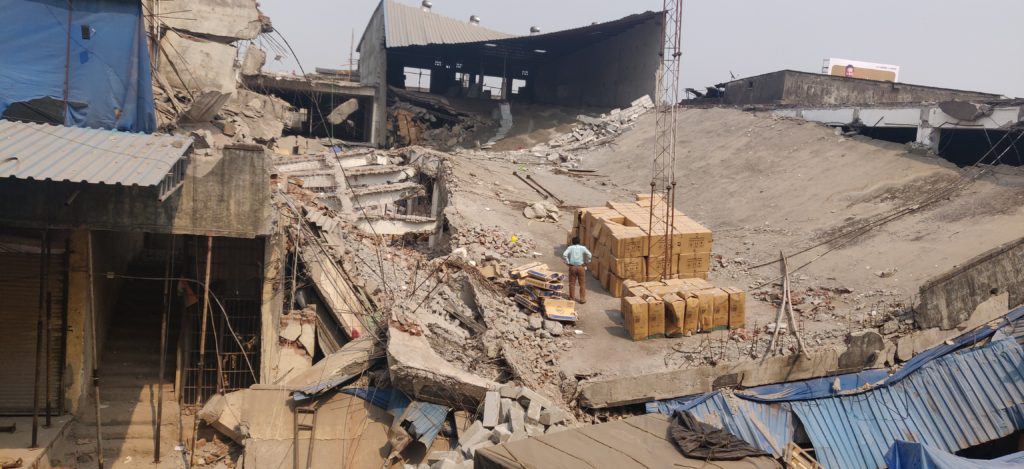
Warehouses function on a lease model. So when the lessee company decides to move to a different warehouse, the lessor hires contract workers to dismantle the interiors of the older warehouse for potential tenants to customise based on their needs.
“Everyday someone is injured,” he said as he held out his colleague 19-year old Anas Shaikh’s hands. Shaikh’s injured fingers were taped together using scotch tape.
We work without proper helmets, gloves, protective gears or first-aid boxes, said Shaikh. We report for work irrespective because our pay gets deducted otherwise, he added.
One of their supervisors, Salim disagreed. He assured all necessary safety instructions and emergency aids.
12 YEARS A TRUCK-HOME

The ceiling of the truck lined with knives. | Mehnaz Yasmin 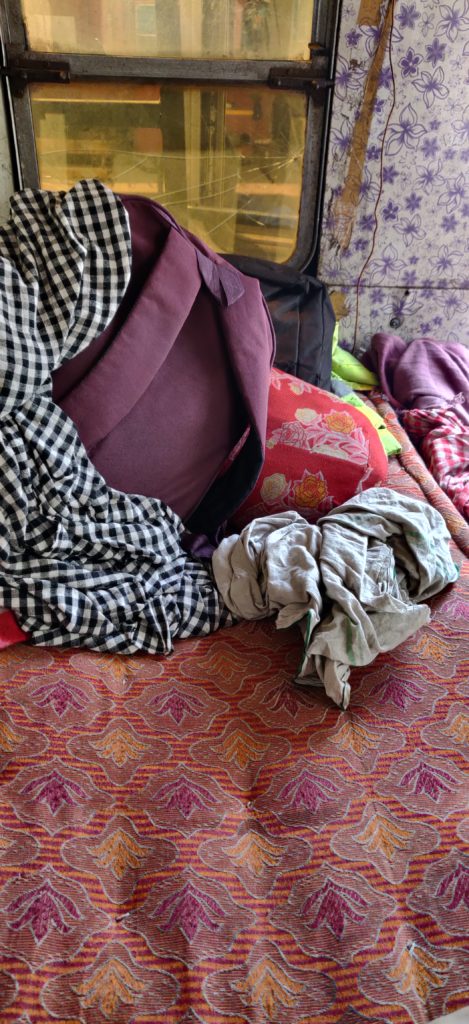
His belongings plonked on a mattress that doubles up as a bed. | Mehnaz Yasmin
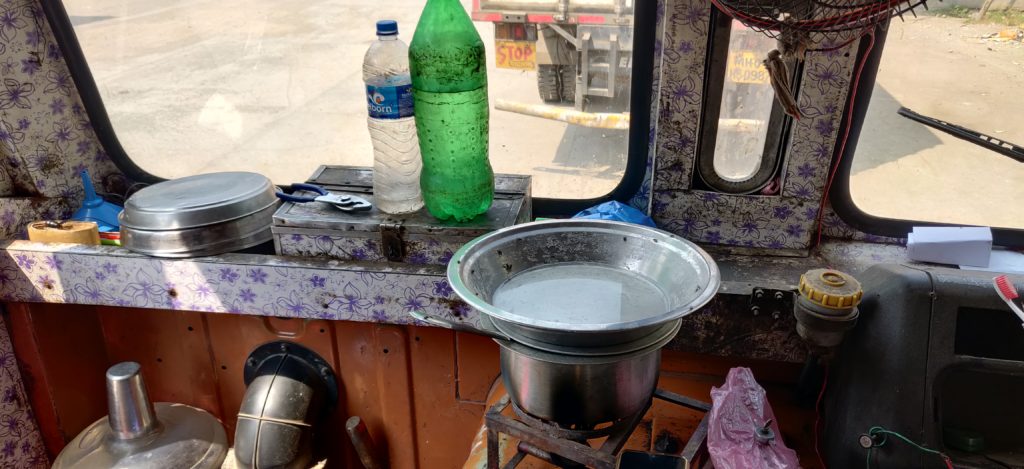
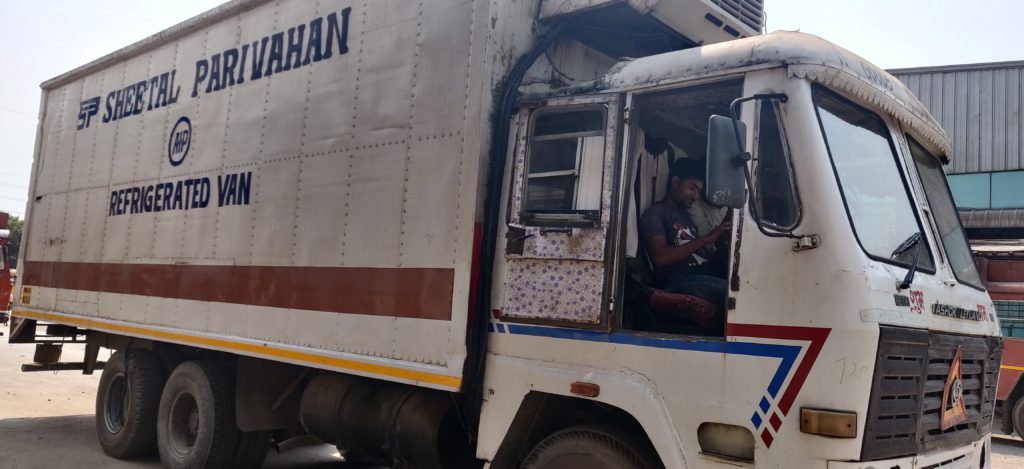
He sleeps on a bed in a four-walled room in exchange for pay cuts.
When on the move, Dheeraj Tiwari lives in his truck. He sleeps in a house only when he returns home to Uttar Pradesh albeit with a beating on his pay.
“I get my salary only for the days I work,” he said.
Born to a chemical factory worker and a home-maker in Unnao near Kanpur, he moved to Mumbai when he was 16 years old. He started working for Sheetal Parivahan, a cold storage company as an assistant to his brother-in-law for ₹1000 a month.
After he learnt driving three years later, he became a truck driver and was paid ₹1500. Now, more than a decade later, he transports medicines from warehouses to hubs all over the country and earns ₹8000.
The truck is not just a carrier. It’s an abode. To feed and shelter themselves, the drivers have installed a small stove beside the steering wheel, dotted the ceiling with knives and peacock feathers and set up a compact single bed behind.
A rolling pin, the board and spices are stored in a basket near one of the doors.
Most truck-drivers have lived like this for years, he said. “There is no respect”.

